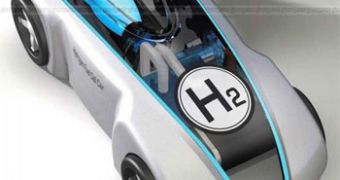No meal is complete without a little bit of sugar. In fact, adding a little sugar even to a salty meal enhances its taste. By 2020, you could add sugar to your car to make it more efficient in producing hydrogen.
This is not a sci-fi theme and even the U.S. Department of Energy's 2006 Advance Energy Initiative proposed this sweet additive as a viable solution. Now, a team of researchers at the University of Georgia and at Virginia Tech, Oak Ridge National Laboratory (ORNL) are suggesting that low-cost hydrogen can be produced using polysaccharides, or sugary carbohydrates, from biomass.
For now, hydrogen cars are still heavy and need more improvements in areas like production, storage, distribution and fuel cells, in order to become a truly reliable alternative in the car market of the world. Using industrial hydrogen produced from the now expensive natural gas is not a tempting proposal so far.
"We need a simple way to store and carry hydrogen energy and a simple process to produce hydrogen, said Y.-H. Percival Zhang, assistant professor of biological systems engineering at Virginia Tech.
The team of researchers is using a new approach, synthetic biology, to completely convert polysaccharides (C6H10O5) and water into hydrogen when and where that form of energy is needed. The method is called "synthetic enzymatic pathway" and it uses a combination of 13 enzymes never found together in nature.
Following nature's example is always a good idea, since plants, for instance, use polysaccharides like starch and cellulose for stable energy storage and building blocks. When enzymes are added to a mixture of starch and water, "the enzymes use the energy in the starch to break up water into only carbon dioxide and hydrogen," Zhang said.
In theory, this method will be highly effective, since the carbon dioxide will be released and the hydrogen will be used by the fuel cell to create electricity, while water, a reaction byproduct, will be recycled for the starch-water reactor.
The best thing about this is that you only need room temperature and atmospheric pressure for the applications to be successful. Introducing this mixture in a car's fuel tank will be economical and efficient.
A car having a 12-gallon tank could hold 27 kilograms (kg) of starch, which can produce 4 kg of hydrogen. One kg of starch will produce the same energy output as 1.12 kg (0.38 gallons) of gasoline, so the car's autonomy will be of more than 300 miles.

 14 DAY TRIAL //
14 DAY TRIAL //